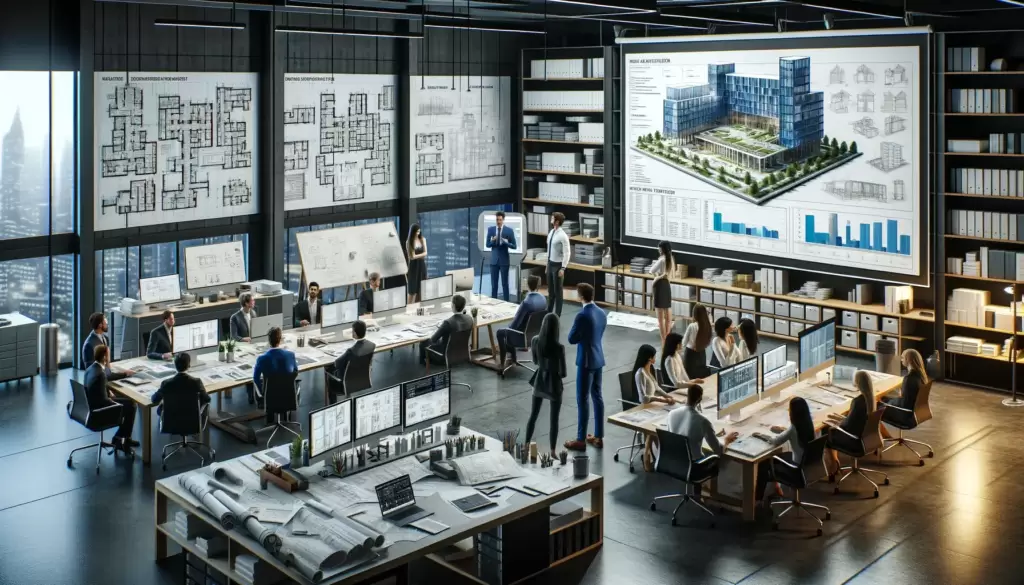
Table of Contents
1. Understanding the Project Scope
Understanding the project scope is crucial in ensuring the success of any architectural project. It involves identifying and defining the specific goals, deliverables, tasks, costs, and deadlines involved in the project. By clearly understanding the scope from the outset, architects can avoid potential pitfalls such as scope creep, budget overruns, and timeline delays. This clarity also enables more effective communication with clients and stakeholders throughout the project lifecycle.
A key aspect of understanding project scope is conducting thorough research and analysis to uncover all potential variables that may impact the project. This includes considering local building codes and regulations, environmental impacts, site constraints, client preferences, and future maintenance needs. By actively seeking to understand these factors at an early stage, architects can develop a more comprehensive vision for their projects and make informed decisions to mitigate risks along the way.
2. Researching and Gathering Inspiration
When it comes to researching and gathering inspiration for an architectural project, the key is to think outside the box. Look beyond traditional architecture sources and draw inspiration from nature, art, music, fashion, and even everyday life. Exploring different disciplines can spark creativity and lead to innovative design solutions that set your project apart.
Additionally, don’t underestimate the power of travel in gaining inspiration. Visiting different cities and immersing yourself in diverse cultures can provide a wealth of ideas and perspectives that can inform your architectural vision. Keep a sketchbook or camera handy to capture details, textures, colors, and forms that resonate with you during your travels. All these collected experiences will enrich your creative process and inspire unique insights for your architectural project.
3. Collaborating with Architects and Engineers
Collaborating with architects and engineers is a pivotal aspect of any successful architectural project. Both professions bring unique expertise to the table, and when they work in tandem, the resulting synergy can elevate the project to new heights. Architects are trained in the aesthetic and functional aspects of design, while engineers specialize in structural integrity and technical feasibility. By fostering open communication and embracing a collaborative mindset, these two disciplines can combine their strengths to create innovative and sustainable solutions.
An effective collaboration between architects and engineers requires a deep understanding of each other’s roles and responsibilities. This includes integrating design concepts with engineering principles early in the project lifecycle to ensure seamless coordination. Moreover, involving both parties from the initial brainstorming phase all the way through construction facilitates holistic problem-solving, leading to more cost-effective solutions that meet both artistic vision and technical requirements. This collaborative approach not only streamlines decision-making processes but also fosters an environment where creative ideas can flourish within realistic constraints.
4. Developing a Detailed Project Plan
Developing a detailed project plan is one of the foundational steps in ensuring the success of an architectural project. A comprehensive plan acts as a roadmap, outlining key milestones, timelines, and resources required for the project. It allows stakeholders to visualize the entire process from inception to completion, ensuring everyone is on the same page and working towards a common goal. Additionally, a well-crafted project plan helps in identifying potential risks and challenges early on, allowing for proactive mitigation strategies to be put in place.
When developing a detailed project plan for an architectural project, it’s crucial to involve all relevant stakeholders from architects and engineers to clients and contractors. This collaborative approach ensures that diverse perspectives are considered, leading to a more holistic and robust plan. Furthermore, breaking down the plan into smaller achievable tasks not only makes it more manageable but also provides opportunities for regular reviews and adjustments as necessary. Ultimately, a carefully developed project plan sets the foundation for successful execution by providing clarity, accountability, and direction throughout the entirety of the architectural project.
5. Navigating Permits and Regulations
Navigating permits and regulations can often feel like navigating a complex labyrinth for architects. The key to success lies in understanding the ever-changing landscape of local zoning laws, building codes, and permit requirements. Collaborating closely with city officials, planning departments, and legal counsel can provide valuable insights into the specific rules and regulations that may impact your project. By staying informed about current regulatory trends, architects can anticipate potential roadblocks and proactively address them during the planning phase.
In addition to regulatory hurdles, architects should also consider the broader implications of environmental standards and sustainability requirements. This includes adhering to energy efficiency guidelines, incorporating eco-friendly materials, and managing waste disposal responsibly. Embracing these considerations not only ensures compliance but also positions architects as champions of sustainable design practices. Ultimately, mastering the art of navigating permits and regulations requires a proactive approach that integrates legal expertise with a forward-thinking mindset that prioritizes environmental stewardship.
6. Managing Construction and Implementation
Managing construction and implementation is a critical phase in any architectural project. To ensure success, the architect must act as the project lead, overseeing every aspect of the construction process. Effective communication with contractors and other stakeholders is paramount to keep the project on track and within budget. Additionally, employing experienced project managers can help navigate potential roadblocks and ensure a smooth implementation process.
Furthermore, leveraging modern technology such as Building Information Modeling (BIM) can streamline the construction phase by providing accurate 3D models for coordination and clash detection. Embracing sustainable construction practices can also enhance the overall project management by reducing waste and improving efficiency. Ultimately, successful management of construction and implementation requires meticulous planning, clear communication, seamless collaboration, and an unwavering commitment to quality.
7. Conclusion: Ensuring Long-Term Success
In conclusion, ensuring long-term success in architectural projects requires a focus on sustainability and adaptability. By considering the environmental impact of materials and designs, architects can create structures that stand the test of time both aesthetically and functionally. Additionally, incorporating flexibility into the design enables buildings to evolve with changing needs and technologies, thus prolonging their relevance and usefulness.
Moreover, collaboration between architects, clients, contractors, and other stakeholders is crucial for maintaining an ongoing commitment to successful project outcomes. Clear communication channels should be established to facilitate continued feedback and updates as the project progresses. This ensures that the initial vision is upheld throughout the entire lifespan of the architectural endeavor. Ultimately, by prioritizing sustainability, adaptability, and collaborative engagement from start to finish, architects can set their projects up for enduring success in the long run.




